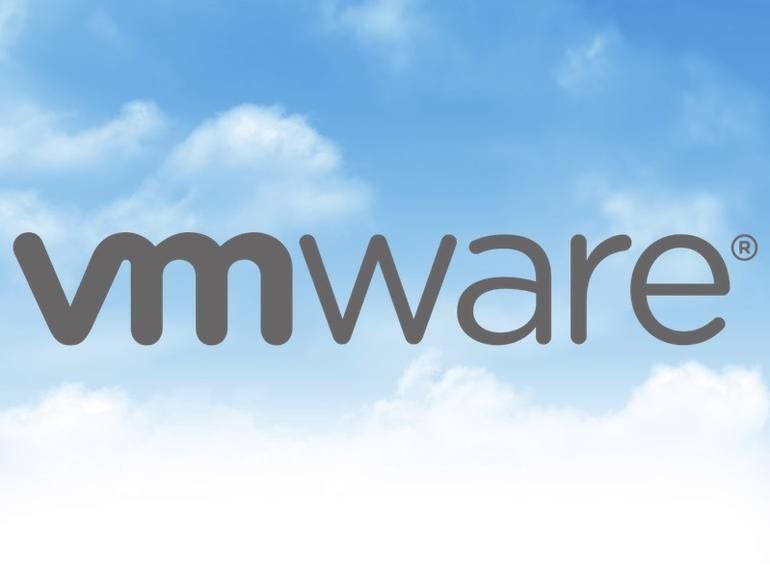
Image: iStock/karandaev
With all the talk of DevOps, containers, and digital transformation, the virtual machine (VM) remains at the core of the modern data center. The VM has proved to be a resilient part of the abstracted data center strategy. A whole ecosystem of storage, vendor, network, and management vendors have evolved around the VM.
The hypervisor is the core technology behind server virtualization. VMware vSphere is the most advanced and prominent hypervisor and virtualization management platform on the market.
TechRepublic’s cheat sheet to VMware vSphere is an overview of the platform. This guide is a living document, and it will be updated when there are major upgrades to vSphere.
SEE: All of TechRepublic’s cheat sheets and smart person’s guides
Executive summary
- What is VMware vSphere? vSphere is VMware’s cloud virtualization platform capable of running full-scale virtual machines and Kubernetes instances for scalable cloud-hosted applications.
- Why does VMware vSphere matter? vSphere is the most popular data center virtualization platform in the industry. Also, the third-party support surrounding network, compute, and storage is second to no other solution.
- Who does VMware vSphere affect? vSphere is a data center product supporting solutions that include storage, network, and compute. IT infrastructure practitioners should stay abreast of the changes in vSphere and the ecosystem (the solution’s biggest strength is its ecosystem).
- When was VMware vSphere released? Originally released in 2009, vSphere is currently on version 7.0, which was released in March 2020.
- How do I use VMware vSphere? The obvious use case for vSphere is server virtualization. With the addition of VSAN for storage and NSX for network virtualization, vSphere use cases are growing beyond server virtualization.
SEE: VMware takes aim at enterprise hybrid cloud (ZDNet)
What is VMware vSphere?
VMware vSphere is a hypervisor and management suite marketed to IT infrastructure providers. The solution has two core components: ESXi, a Type 1 hypervisor, and vCenter Server for infrastructure management.
ESXi is what’s called a Type 1 hypervisor (there are also Type 2 hypervisors); another name for a Type 1 hypervisor is a bare metal hypervisor. Bare metal hypervisors are solutions where the hypervisor couples to the OS kernel. As solutions such as Hyper-V and KVM have matured, the lines between Type 1 and Type 2 hypervisors blurred. In the VMware product portfolio, there is a clear delineation between Type 1 and Type 2; ESXi is a Type 1, while VMware Workstation and VMware Fusion are Type 2 hypervisors, both of which require separate full host operating systems to function. ESXi is available as a free download.
SEE: Managing the multicloud (ZDNet/TechRepublic special feature) | Download the free PDF version (TechRepublic)
vCenter Server, the second component of vSphere, is where much of the value add exists over many other products. In vSphere 6.5, vCenter comes in two flavors: Windows Server and virtual appliance (VCSA). In previous versions of vSphere, VCSA lacked some scale and availability features of the Windows version.
The primary function of vCenter is to provide a single interface for the virtualized data center. vCenter is the management interface for ESXi, the underlying infrastructure resources, and the VMs. vCenter is also the API provider for vSphere. vSphere’s partner ecosystem leverages the vCenter Server for integrations into vSphere. For example, many hyperconverged and backup solutions leverage vCenter as the management interface to their products.
vSphere 7.0, released in early 2020, is the latest version of the platform, and it added quite a few features that change the overall makeup of vSphere. Along with ESXi and vCenter Server, vSphere 7.0 introduced Kubernetes and the Tanzu Kubernetes Grid, which is designed to make launching Kubernetes instances faster through pre-integrated and validated software components.
Additional resources
- Video: Understand the difference between vSphere Integrated Containers and VMware’s Photon Platform (TechRepublic)
- Open source tool uses PowerShell to enable vSphere infrastructure as code (TechRepublic)
Why does VMware vSphere matter?
There is increased competition in the hypervisor space from Microsoft’s Hyper-V and open source KVM, and all enterprise IT vendors face challenges presented by the public cloud. VMware continues to innovate and leverage the existing ecosystem and install base to maintain a dominant position.
Public cloud proves the first stop for new applications within startups and larger organizations; however, legacy 3-tier apps comprise most of the typical enterprise data center. Without refactoring applications and retraining staff, virtualized server environments remain the most appropriate platform for legacy applications. VMware has built a significant ecosystem around vSphere.
VMware has hundreds of partners that integrate with vSphere to enhance or expand the functionality of the platform. Some companies, such as Nutanix, are a competitor and an ecosystem partner to VMware. Customers have built operations around the vSphere product and ecosystem.
The 2020 addition of Kubernetes also makes vSphere a potential competitor in the cloud-hosted application space. Current vSphere customers that use the platform for managing virtual machines can easily add Kubernetes instances via the Tanzu platform, which VMware said is designed to be an easy spin-up option for pre-configured Kubernetes clusters.
Additional resources
- VMware Q4 strong, company calls quarter balanced (ZDNet)
- IT leadership about balancing freedom and control: VMware CEO (ZDNet)
- Tech execs unsure about cyberinsurance, want storage flexibility, and wonder about AI (TechRepublic)
- SDN and the data center: Deployment plans, business drivers, and preferred vendors (TechRepublic Premium)
Who does VMware vSphere affect?
VMware vSphere is a pioneer in server virtualization, though its reach expands beyond the server and OS silo. The number of virtual ports has long outnumbered physical Ethernet ports.
Server virtualization emerged as a force in networking. As the leader in server virtualization, VMware plays a significant role in networking and network management. VMware has begun to develop relationships with network managers. Beyond the base support for vSwitch and dvSwitch, VMware offers support for Open vSwitch when implementing the NSX add-on product.
Storage is another area vSphere has expanded its reach. vSAN is a licensed virtual storage feature available in vSphere and managed via vCenter. Even without purchasing the vSAN feature, vSphere offers deep integrations with third-party storage solutions.
Additional resources
- Is VMware NSX more than just a security platform? (TechRepublic)
- Why VMware’s NSX must evolve to keep up in a serverless future (TechRepublic)
- VMware goes all in on containers with Kubernetes as a Service (TechRepublic)
- Video: How modern data center technologies are changing the way admins interact with storage (TechRepublic)
- Is IT witnessing the death of the storage administrator? (TechRepublic)
- Solving the disconnect between the CEO and the data center (TechRepublic Premium)
- Hiring kit: Data architect (TechRepublic Premium)
- Virtualization policy (TechRepublic Premium)
When was VMware vSphere released?
The core component of vSphere consists of the hypervisor, ESXi, which was first introduced in 2010 as version 4.1. Prior to 4.1, VMware produced variations of the hypervisor dating back to early 2002.
vSphere is currently on release 6.5. VMware has established a tick-tock schedule for vSphere upgrades. Since VMware Infrastructure 3.0, VMware has had a major, minor update schedule. Typical release schedules have followed VMware’s major user conference VMworld, and version 6.5 was released at VMworld 2016.
vSPhere 7.0 was released in early 2020, and as mentioned above it added Kubernetes in the form of VMware’s Tanzu platform. At VMworld 2020, VMware announced the expansion of Tanzu in the form of a partnership with GitLab support and Tanzu support updates on a variety of third-party platforms that use vSphere.
Additional resources
- Multi-cloud still front of mind for VMware (ZDNet)
- Video: CIO explains VMware’s next step in its IoT journey (TechRepublic)
Who are VMware vSphere’s competitors?
While VMware is the dominant provider in the hypervisor space, competition remains.
VMware’s largest competitor is Microsoft with its Hyper-V virtualization platform. Hyper-V is included as part of the standard Windows Server license.
The open source project KVM powers many cloud service providers. KVM comes in commercial form from the standard enterprise Linux distributors including Red Hat and Canonical.
Citrix offers a hypervisor named XenServer based on the open source project Xen. It’s believed Xen powers AWS EC2.
Most recently, hyperconverged infrastructure company Nutanix introduced a KVM variant named AHV.
Additional resources
- Why all hyperconverged infrastructure isn’t created equal (TechRepublic)
- What HPE server support means for the future of the Nutanix ecosystem (TechRepublic)
- How to administer Microsoft virtual machines using Hyper-V Manager (TechRepublic)
How do I use VMware vSphere?
VMware has gradually reduced the barrier of entry to vSphere. Traditionally, a minimum vSphere cluster recommendation requires a shared storage infrastructure and three physical hosts. With the introduction of vSAN, a dedicated shared storage array is no longer needed. VMware has also partnered with public cloud providers to provide vSphere compatible infrastructure. vSphere has three public cloud options.
The first option is vCloud Air, a service formerly owned by VMware but sold to French cloud provider OVH. The second option is the vCloud Air Network of service providers. Service providers leverage VMware’s cloud platform vCloud Director to provide multi-tenant cloud infrastructures. The third option is vSphere in commodity public cloud in either IBM or AWS. The IBM flavor of public cloud is the only publicly available option.
Pricing for vSphere varies wildly based on desired features, the number of licenses, and other specifications. It’s complicated enough to merit a white paper on pricing and package differences that any potential vSphere customer should take the time to review.
In terms of actual prices for vSphere, the most affordable way to get a license is the vSphere Essentials Kit, priced at $510. It scales up from there: vSphere Standard is $995, Enterprise Standard is $3,595, and the most expensive package, vSphere Enterprise Plus Acceleration Kit, is $24,250. That doesn’t include a year support subscription, the pricing for which also varies greatly based on the version of vSphere purchased.
Additional resources
- Hands-on review: Buggy vCloud Air isn’t production ready (TechRepublic)
- VMware shifts away from public cloud hosting with sale of vCloud Air to OVH (ZDNet)
- New vCenter Server Appliance Deployment Walkthroughs (VMware)
- Don’t invest in a hyper-converged solution before defining your target use case (TechRepublic)
- VMware’s cloud comes to Amazon AWS in new SDDC push (TechRepublic)
- Quick glossary: Virtualization (TechRepublic Premium)
- IBM Cloud for VMware Solutions (IBM)
Editor’s note: This article was originally written by Keith Townsend and updated by Brandon Vigliarolo to reflect the release of VMware vSphere version 7.0 and pricing information.

